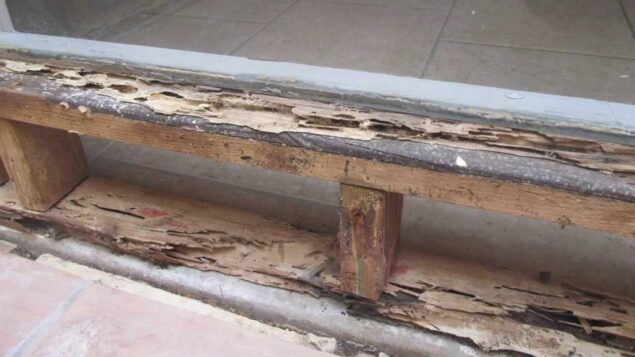Termites are the major demolishers and consumers of wood that are commonly known as white-ants due to their great resemblance to the ants. They only differ from ants in terms of antenna and waist as ants have elbowed antenna and narrow waist whereas termites have a straight antenna and broad waist. These tiny creatures are simply attracted to the wooden stuff and are capable to cause severe damage to it.
These trouble-causing pests are normally linked with buildings, homes, fences, and trees. They’re commonly found in three categories that include DampWood Termites, Subterranean Termites, and Drywood Termites. Among them, drywood termites are the most common ones and they cause severe damage. So, their presence can affect one’s holding, therefore, these pests need to be killed at once.
During this article, we’ll walk you through the detailed explanation of Drywood Termites that will surely assist you all. So, for the clarity of the purpose proceed reading further.

What are Drywood Termites?
Background:
Drywood Termites finds their domain in dry, sound woods so that they can consume and wipeout wood. They are usually grouped in an organized system where queen termite interacts with the king termite to lay eggs. Once the egg hatches, the baby termites join the worker caste that chews the woods and demolishes it.
Similar to other species of termites, Drywood termites eat cellulose that is present in wood and some plants.
Appearance and Size:
Drywood termites are usually pale brown but their color can vary from yellowish-tan to brown.These tiny creatures are found in various sizes thatvary depending upon their caste. In the drywood termite territory,female termite and male termite are found to be ½ inch in length whereas soldier termites are found to be 3/8 inch in length.
Identification:
The drywood termites can be identified with the help of swarmer wings which flies out from its initial territory in search of some new territory. If you’re able to find such wings then there is a danger of greater infestation in your surroundings.
If you heard hollow-sounding noises or found some white ants nearby then this is the clear indication that your house is infested by these pests
Habitats:
As we are aware that termites choose their habitat according to their category to thrive. Different termites require different habitats such as Subterranean termites are attracted to the soil and make it there next-box whereas the drywood termites prefer to live in dry, sound wood. For drywood termites, the wood acts to be the feed tanker but for subterranean termites, the soil acts as a feed tanker. The dry wood termites can thrive without moist soil and water but they can’t survive without the woods.
Drywood termites frass meaning?
The drywood termites frass is nothing but a pile of pellets that is found when drywood termites don’t find enough space for their survival. Then these creatures rush out to clear their nest. They expel the solid waste pellets through the exit holes in the wood. These pellets are known as “Frass or Dropping”
What does drywood termite frass look like?
The drywood termite frass or droppings are minute oval-shaped capsules packed with six concave sides and rounded ends. This frass or droppings can be of various colors, depending on the color of the wood that termites have been chewing.
These pellets are 1millimeter in length and can form tiny granules just like salt or pepper beneath exit holes.
Drywood termite Dropping?
The drywood termite dropping is nothing but a drywood termite frass. When drywood termites don’t find enough space for their survival then they rush out to clear their nest. These creatures expel the solid waste pellets through the exit holes in the wood. These pellets are known as “Frass or Dropping”
Drywood termite frass prevention
Drywood termite causes severe damage to your wooden furniture that cannot be easily cured. These species are difficult to detect initially because they nest inside the wood. So, to get rid of them you’ve to change the conditions that attract these trouble-causing pests.
Some essential preventions need to be adopted to kick out these irritating pests.
- Put away firewood and tree limbs from your home.
- As drywood termites are adored by softened woods, therefore, ensure that the water drains away from your house.
- Seal up the damped wood stuff placed in your homes with the help of paint, varnish, or any sealant.
- Cover your doors, windows, vents, and openings with the fitted pipes.
- In case of severe damage, do consult an experienced pest management professional


